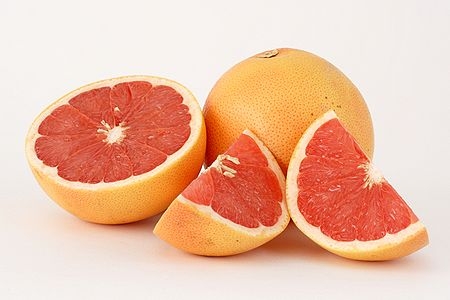Yearly per capita consumption of grapefruit has been on a steady decline since the late 1970s, according to an article in the Riverside Press-Enterprise. To boost the fruit's popularity and keep the industry in business, growers in Southern California have organized a cooperative and hired PR expert Kari Birdseye to put together a marketing program.
In 1976, Americans ate almost 9 pounds of grapefruit per year. As a late-baby boomer, that doesn't come as a big surprise to me. The popular "grapefruit diet" was one of the first weight-loss fads I can remember. By 2007, per capita consumption dropped to 2.76 pounds, the article said.
Birdseye told Press-Enterprise reporter Leslie Berkman that one of the cooperative's goals is to extend the appeal of grapefruit to the younger set. In the U.S., it seems to be eaten by people who are middle-aged and older.
Another issue is that warning labels on some drugs for lowering cholesterol and blood pressure say they should not be taken with grapefruit juice. Birdseye said she is enlisting scientists at UC Berkeley to review the research that has been done on the interaction of grapefruit with drugs and on the nutritional benefits of grapefruit, such as in fighting obesity, Berkman reported
"The first step is to do a comprehensive review of the scientific literature to determine what health benefits can be authentically claimed and to see where there might be some holes where more research is required," Birdseye was quoted. "Let's get the science behind us."
According to the article, Birdseye is planning to meet with Thomas Baldwin, dean of the College of Natural and Agricultural Sciences at UC Riverside, to find ways UCR experts can help grapefruit growers, such as by breeding grapefruit varieties to enhance existing health benefits.
Tracy Kahn, curator of the UCR citrus variety collections, noted in the story that one reason for the growing popularity of pink grapefruit is that the pigment that makes it rosy, lycopene, is very healthful.
Attached Images:
